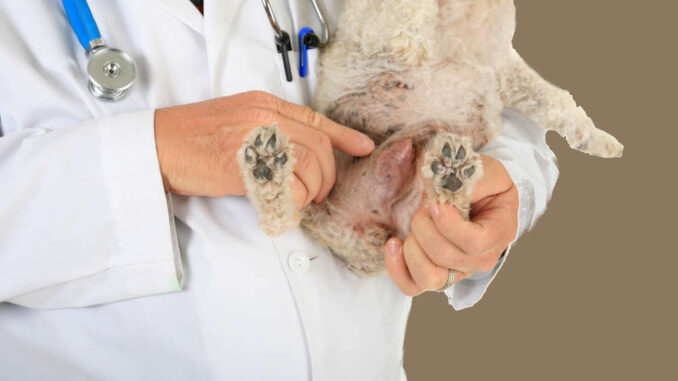
This article was updated on February 18th, 2024
There are many different causes of lumps under the skin and not all of them should cause concern. In this article, we will review the most common types of lumps that appear under the skin, and what you should do next.
8 common lumps that grow under the skin
1. Lipomas
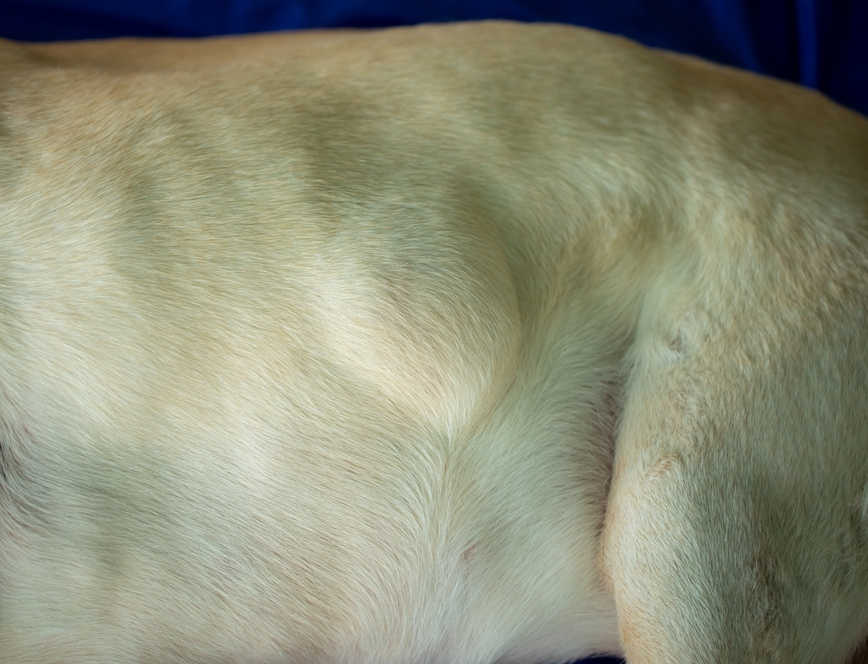
Lipomas are one of the most common lumps we see, especially on older dogs. They are benign fatty lumps which grow in the subcutaneous layer under the skin.
These can be any size but are often unnoticed until they are relatively large as they don’t cause irritation and grow slowly over time. They are relatively soft, ‘squishy’ and smooth and can usually be moved around a little under the skin.
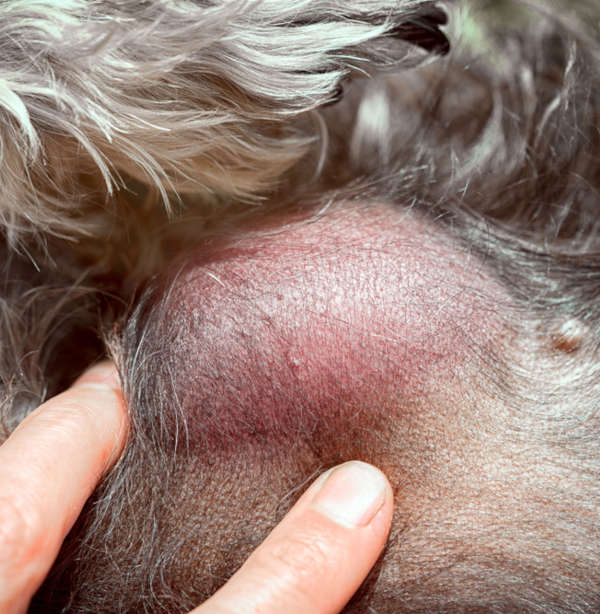
Lipomas don’t typically require treatment, although they may become large enough that they interfere with walking or get in the way; in this situation surgical removal is typically relatively simple, although it does require a general anesthetic. Other types of lumps that grow “under” the skin can feel very similar to a lipoma: it’s worth discussing with your vet whether to take a sample to rule out other causes. Learn more about lipomas in dogs.
2. Abscesses and infections
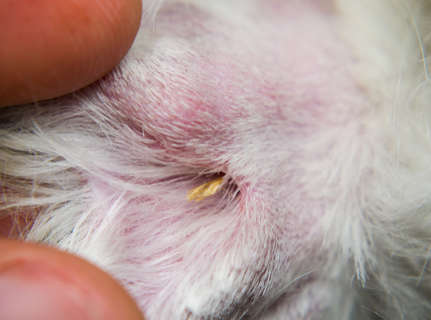
Swelling under the skin can indicate an infection is causing inflammation. This can be due to a small wound or foreign material (like grass seeds or thorns) trapped under the skin. This is especially common in summer when grass seeds are widespread. They are easily caught in the skin and can migrate, causing lumps on paws and lower legs. You can view more pictures of lump under the skin as a result of foreign objects of grass seeds here and here. These lumps are often very sore and may have a visible opening from which pus or fluid may drain.
During the summer we recommend checking your dog’s paws after every walk and removing any visible seeds.
Depending on the lump, your vet may need to take a ‘fine needle aspirate’ using a small needle to identify if there is fluid present. If the suspected abscess is severe or a foreign body is strongly suspected, they may recommend sedation or anesthesia to surgically open the lump and flush out the contents. If it is less severe and there is no foreign material present, you may be sent home with pain relief and antibiotics.
3. Cysts
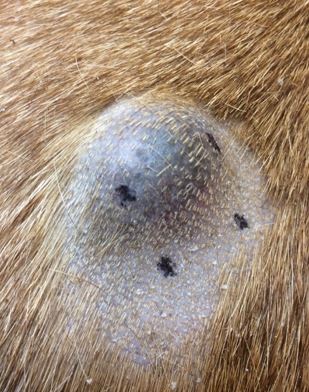
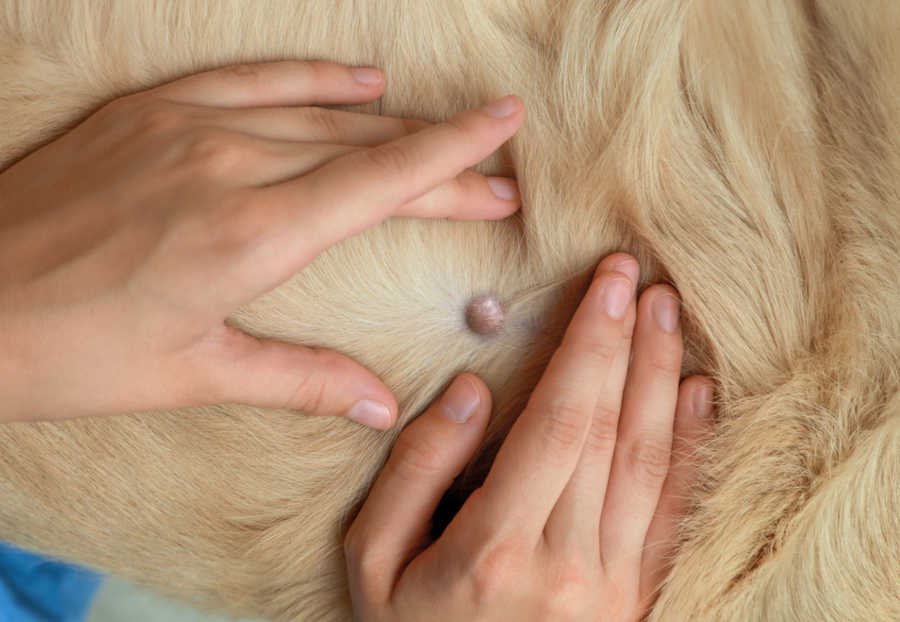
Cysts on dogs may have many different appearances. A true cyst is a hollow area within the tissues that contain liquid or solidified bodily fluids as shown on the pictures above. The most common type is sebaceous cysts: they contain sebum, which is an oily, waxy substance secreted by the dog’s sebaceous glands. Learn more about the types of cysts found in dogs.
4. Post-vaccine lumps
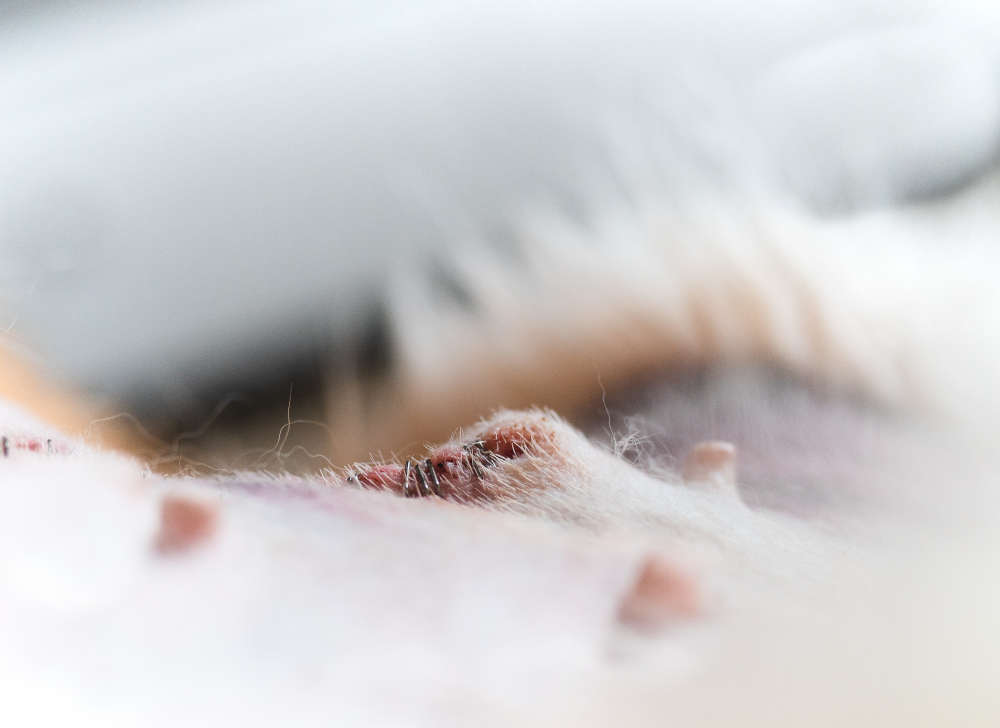
After a routine vaccination some dogs will experience a small amount of swelling and possibly some irritation. This usually resolves within a week. If this is severe or persists it’s worth contacting your vet.
Rarely, a larger, firm, fibrous lump may appear under the injection site and can remain for several weeks. This can be a normal immune reaction which will disappear over time but it’s worth discussing with your vet to rule out any more serious issues. Learn more about vaccine lumps.
“Up to 80% of tumors in or under the skin of dogs are benign. These include the lipomas described above as well as a wide range of different benign growths. These benign lumps tend to grow relatively slowly and don’t cause significant irritation, so they usually don’t require treatment.”
Although many skin lumps growing under the skin are harmless, it’s crucial to consult your vet for a proper diagnosis. Delaying treatment for cancerous lumps can be extremely harmful. Let’s explore malignant skin lumps in dogs and determine when you should seek veterinary advice.
Cancerous lumps or growths under the skin
6. Mast cell tumors
Mast cell tumors account for up to 21% of skin tumors in dogs. They usually occur in middle aged and older dogs and are especially common in Boxers. They have a very variable appearance and can mimic other types of lumps.
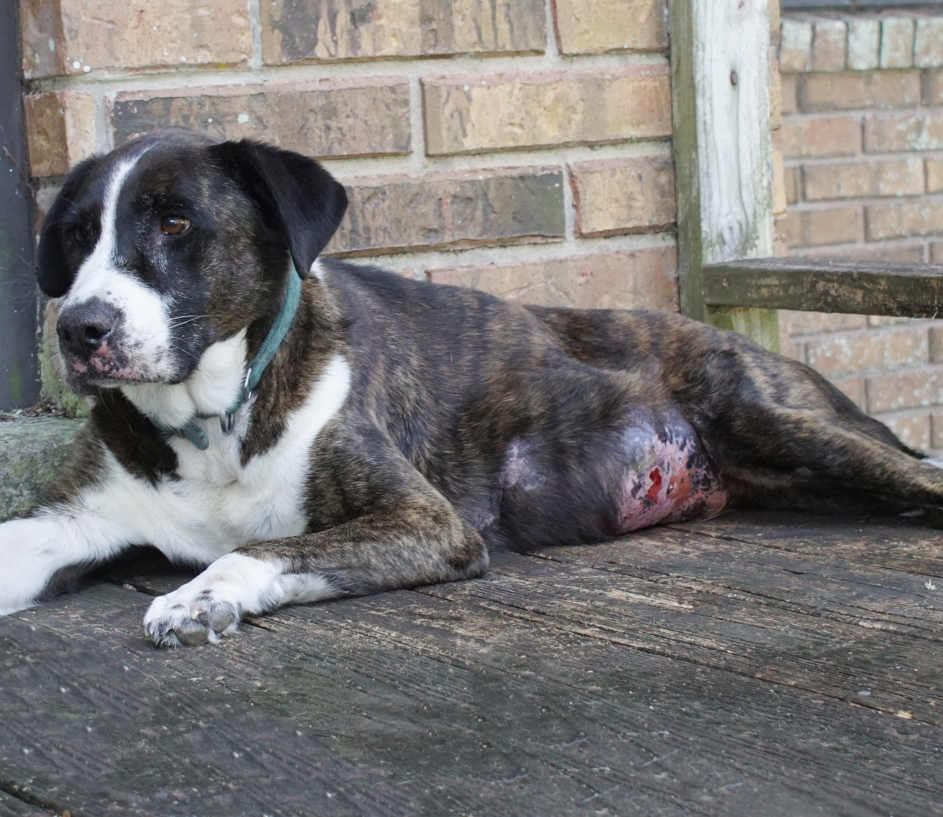
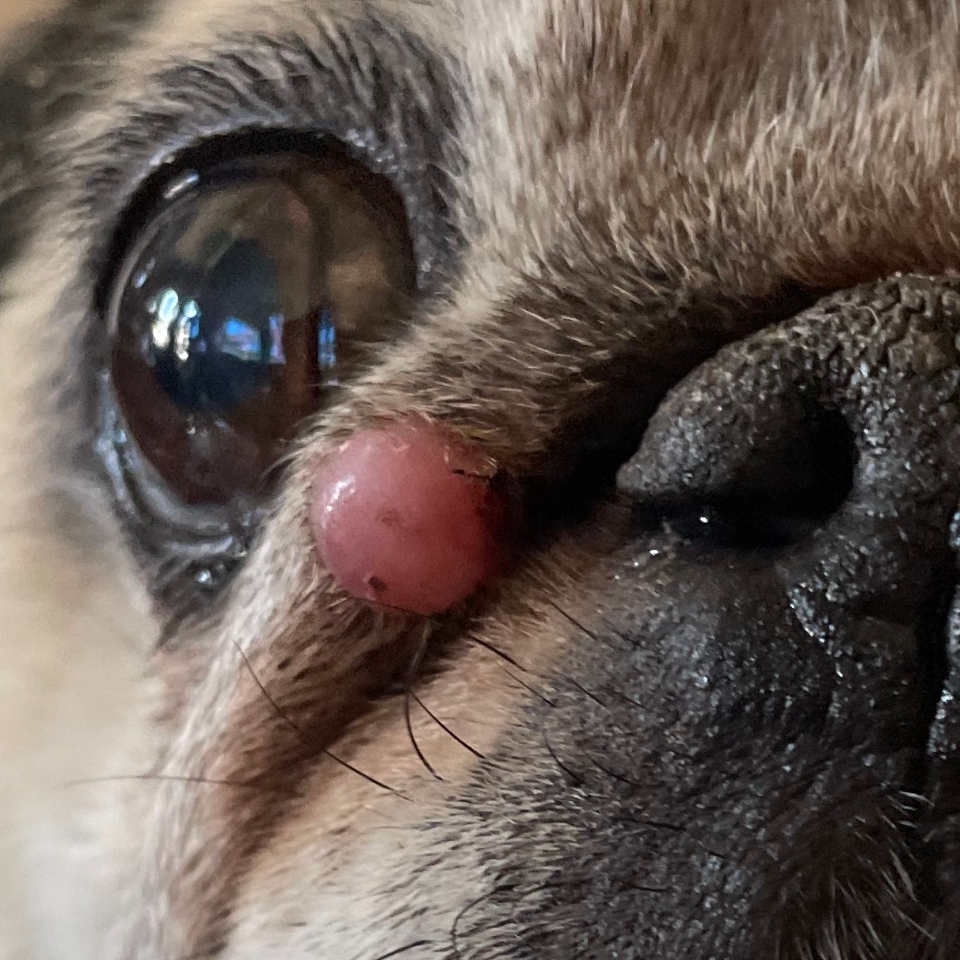
Mast cell tumors can be very superficial or may be located fully beneath the skin. Mast cells are a type of immune cell capable of causing inflammation; as a result these lumps often become inflamed and ulcerated or cause itching and irritation. They may also fluctuate in size due to the inflammation. Some, however, do not cause visible problems in their early stages and may not be diagnosed until it is too late to effectively treat them; although they often grow rapidly, some remain small whilst continuing to develop and spread.
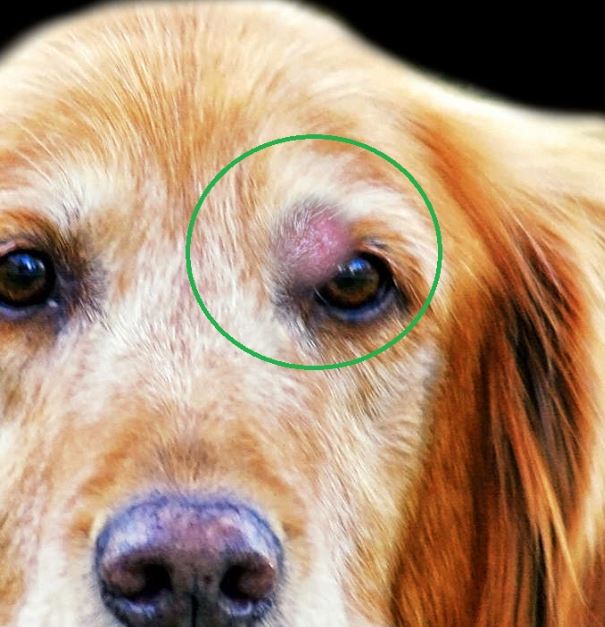
Sadly, I’ve diagnosed many mast cell tumors which owners did not realize were a concern. Early diagnosis prior to the tumor spreading is critical. They are usually easily diagnosed by fine needle aspiration. Your vet may also recommend further investigations to help rule out spread to other organs including the lymph nodes, liver and spleen. Typically surgical removal is the best treatment but other options include chemotherapy and radiotherapy. Successful treatment depends on many factors including how aggressive the tumor is, how early it is detected and whether it has spread. For ‘low grade’ mast cell tumors treatment may be curative in 75-100% of cases. For ‘high grade’ tumors this is much lower. View more pictures of mast cell tumors or learn about symptoms and treatments.
7. Sarcomas
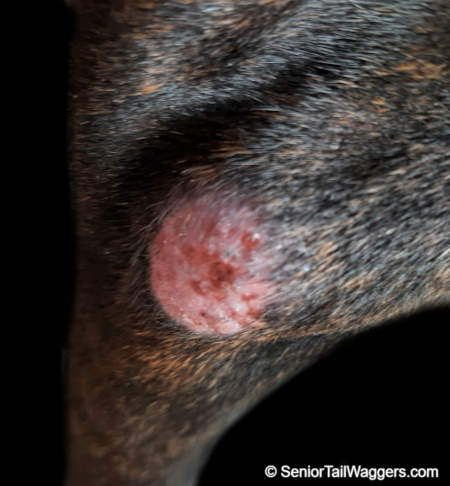
Sarcomas, often referred to as ‘soft tissue sarcomas’, are a group of tumors arising from tissues including connective tissues and muscles. They account for around 15% of skin tumors in dogs. They are typically firm and fibrous but can be soft and mimic lipomas. They may be freely moveable or adhere to the surrounding tissues. In later stages, there may be irritation and ulceration of the skin.
These tumors often do not shed cells very easily; a larger biopsy may be required for an accurate diagnosis. Treatment usually involves surgery. The likelihood of success will depend on the size and specific type of sarcoma. Surgery can be curative but many of these tumors recur as they often infiltrate surrounding tissues. Learn more.
8. Mammary tumors
Mammary tumors account for up to 50% of tumors in intact female dogs. Females spayed before their first season have a much lower rate of mammary tumors later in life, but this benefit is lost if they are spayed after their first three seasons. Approximately half of these tumors are malignant (typically mammary carcinomas) whilst half are benign (e.g. mammary adenomas).
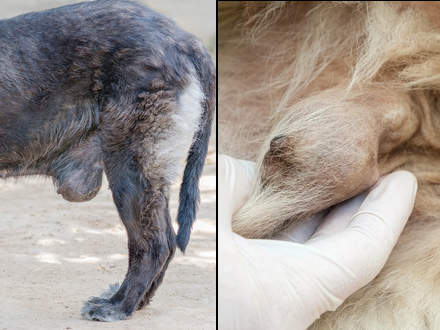
Mammary tumors occur under the skin and adhere to the surrounding mammary tissues and skin. They may be any size and are often relatively firm. Some cause irritation and changes in the overlying skin, especially as they grow larger.
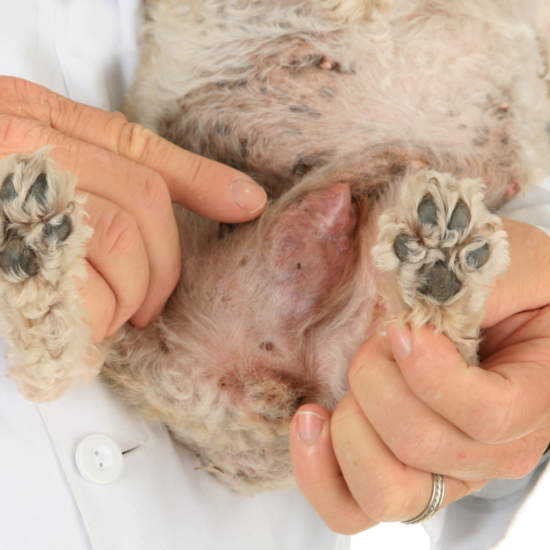
Fine needle aspiration can help to diagnose these tumors but a larger biopsy is often needed. It is also important to check for spread to other areas including the other mammary glands, lymph nodes and lungs. Treatment is typically surgical, although chemotherapy may be an option in some cases. The extent of the surgery depends on the type, size and condition of the tumor.
The smaller the tumor the greater the likelihood of success; tumors < 1 cm have a good prognosis, whilst those > 3 cm are much less likely to have a good outcome. Learn more about mammary tumors or the costs of removing mammary tumors.
It’s important to consult your veterinarian if you notice a new lump on your dog. It’s often not possible to diagnose a lump just by looking at it. Your vet can perform FNA or biopsy to determine the correct diagnosis and treatment.
When is a lump under the skin a cause for concern?
Whilst the appearance of a lump is often a good indication of the likely cause, it is impossible to rule out some tumors without further testing. We therefore always recommend getting any new lumps checked by your vet. Signs that a lump is more likely to be concerning include:
1. Rapid growth
A lump that appears and grows rapidly is more likely to be an aggressive type of growth. Alternatively, it may indicate an infection or abscess developing. Either way, rapid growth is a good reason to get a lump checked out.
2. Irritation or inflammation
Similarly, irritation or inflammation may indicate a more aggressive tumor (e.g. mast cell tumors) or infection.
3. Location
Malignant lumps can occur anywhere on the body, so it’s worth getting any lump checked out sooner rather than later. A lump in the mammary area is always worth checking in females due to the high risk of cancerous mammary tumors.
Swollen, painful lumps around the paws are more likely to indicate an infection or something like a grass seed, although cancerous growths can also occur in this location.
Lumps around your dog’s anus should also be checked as soon as possible, as malignant tumors are common in this area.
4. Size
You might think the size of a lump is a good indicator of whether it’s concerning – however, for many lumps this isn’t true. Whilst benign lumps like lipomas can slowly grow to very large sizes, some lumps like mast cell tumors can remain very small whilst spreading to the rest of the body and causing severe disease. Sadly, by the time a lump has grown large enough for some pets to be brought to the vet, the tumor has spread into the surrounding tissues and potentially other organs, preventing effective treatment.
Related posts written by our veterinarians:
- Dog Belly’s Lumps and Bumps
- Cancerous Lumps in Dogs
- Lumps on a Dog’s Lips, Mouths, Eyes, Backs, Paws or Under the Armpits.
Can I wait and see how it evolves?
Some lumps, like cysts and lipomas, are unlikely to cause your dog issues, and may not even need treatment.
Others, like lumps that appear after a vaccination, may disappear with time. If a small lump appears where your dog has just had a vaccination and your dog is otherwise well, it may be worth waiting to see if it resolves over the next week.
Generally, it’s worth seeing your vet sooner rather than later if you notice a lump. It can be difficult to identify potentially malignant lumps at home and leaving them to grow can make them harder to treat.
Similarly, if you suspect your dog has an infection, abscess or foreign material under the skin, leaving this may make treatment more difficult, cause more pain and result in a slower recovery.
What does it mean when a lump is under the skin?
The skin is made up of the superficial ‘epidermis’ layer and the deeper ‘dermis’ layer. Beneath this is a layer of loose connective tissue and fat referred to as the ‘hypodermis’ or subcutaneous layer. Lumps can develop from any of these layers and their location can play an important part in diagnosis.
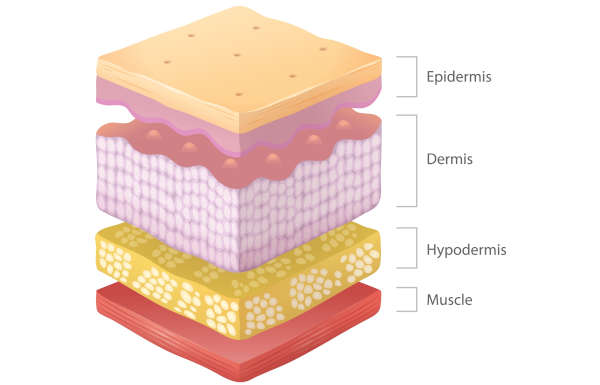
Lumps that develop under the skin may still adhere to the overlying skin, but you can usually feel that they extend underneath the skin itself:
- If the skin moves freely over a lump, it is likely to have arisen from the subcutaneous tissues or deeper tissues e.g. muscle.
- If a lump is firmly adhered to the underlying tissues then it may have grown from them or into them; in some cases this makes it more difficult to treat.
FAQ
Is a dog’s lump suddenly appearing overnight a bigger cause for concern?
Potentially. Lumps that grow very rapidly are more likely to be malignant, but lumps may also appear rapidly if they are caused by an infection, or the lump may have been present for longer but has only suddenly become apparent – it’s often difficult to identify lumps if they are small and under the skin.
What if my dog’s lump is very small (the size of a pea)?
Whether or not a lump is concerning will depend not only on size but also on a number of factors including your dog’s age, breed, past history, where in the skin the lump is and what it feels and looks like. If a small lump is not growing rapidly, it is less likely to be malignant – but it still could be.
What if my dog’s lump can be moved a little bit under the skin?
If a lump can be moved a little under the skin this is a positive sign. Benign lipomas are very common and are usually moveable under the skin. Malignant lumps are more likely to adhere to other tissues and may be less freely moveable; this is not always the case, however.
My dog’s skin lump is hard to the touch, does it help evaluate what kind of lump it may be?
Lumps under the skin that are firm to the touch are less likely to be benign lipomas; however, they may still be a benign lump like a cyst or other benign growth. If a firm lump is present your vet will often recommend further investigation to rule out malignant causes like sarcomas.
What if there are several lumps or bumps under the skin?
Some dogs are prone to developing specific lumps and bumps; for example, older dogs often present with multiple fatty lipomas. Older dogs are also prone to cancerous growths, however, so if you notice a new lump it’s worth getting it checked. Some malignant growths can initially appear similar to previously diagnosed benign lumps, so your vet may recommend sampling it to check.
Diagnosis at the veterinarian: what you can expect
Depending on the mass, your vet may be reasonably confident of a diagnosis based on the history provided by you and their examination of the lump. If you are keen for a definitive diagnosis or your vet has any concerns, they may recommend further testing.
This usually involves a fine needle aspirate. Your vet will take a small needle and use it to take a small sample from the lump. The vet will either look at the sampled cells under the microscope or submit them to a laboratory for analysis. This typically costs up to $200.
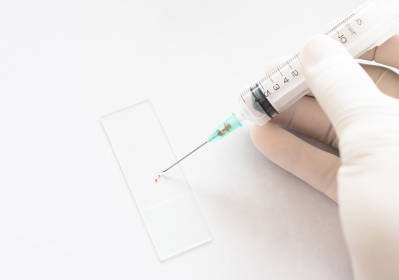
In some cases a larger biopsy is required, which may be taken either with local anesthetic or under sedation / general anesthetic. Punch biopsies are frequently performed to obtain samples a few millimeters in diameter. Costs vary but are typically around $400-$800, although this depends on the samples and level of anesthesia required.
Is there anything that can be tried at home first?
Whilst waiting for a vet appointment there are some things you can do to help if the lump is sore. It’s best not to apply too many products to the skin as they may cause irritation or make it harder to examine. You can bathe sore or dirty areas with dilute saline, using cooled boiled water and a small amount of table salt. If your dog is chewing or scratching it, you can use a plastic ‘buster collar’ or cover it with a pet suit or t-shirt to prevent trauma. Avoid bandaging paws and legs at home as it is very easy to cause damage if bandages are overly tight or create a humid environment for infection. If you need to cover your dog’s paws, consider using socks.
If a lump is particularly sore or worsens whilst you are waiting for an appointment, make sure to let your vet clinic know so that they can book you in sooner rather than later.
References:
Dobson, J.M. and X., L.B.D. (2011) BSAVA Manual of Canine and Feline Oncology. Quedgeley: British Small Animal Veterinary Association.
Disclaimer: This website's content is not a substitute for veterinary care. Always consult with your veterinarian for healthcare decisions. Read More.


Be the first to comment